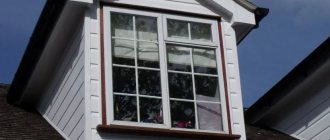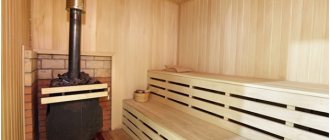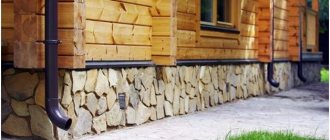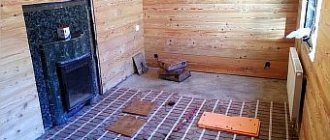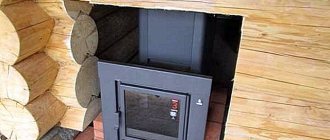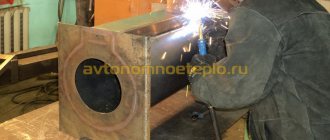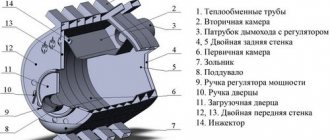When it is necessary to install a stove in a bathhouse on a wooden floor, this can be done while complying with all fire safety requirements.
According to these requirements, installing a stove in a bathhouse on a wooden floor is allowed only if the floor is protected by non-combustible materials and is also insulated from the heat of the stove.
How can such a scheme be implemented at the lowest cost without burning down your own bathhouse?
Where to place the sauna stove
Installation of the firebox begins with choosing a location. It is recommended that at the repair planning stage you have information about the characteristics and design of the bath unit that will be used. You will also need to decide on which side the sauna will be heated.
General recommendations for placing a firebox in a sauna room:
- A brick or metal unit located in a steam room. Such a device is placed in the central zone or next to the outer partition. Fuel is stored indoors. This option is simple and convenient - you don’t need to leave the bathhouse to add firewood or control or change the heating intensity. The advantage is that the installation work is not difficult, because there is no need to make an opening in the wall.
A metal stove is installed on a non-flammable foundation Source martand.ru
- The part for storing fuel is taken outside the steam room, and the stove is located in the sauna room. Some cast iron models have an external combustion chamber, the doors of which are located in the dressing room or washing area. The heating unit is mounted near the wall - on the right or left side of the front door. To form a chimney wall, a stone heat generator is erected between two rooms. The advantage of this option is the heating of the room where the firebox is located. Accordingly, in the cold season there is no need to turn on additional equipment to heat the room. When the door of the fuel device comes out, the oxygen in the steam room is not burned, there is no need to arrange an air flow. Another positive quality is that fuel material is not brought into the bathhouse, which will make it easier to maintain cleanliness.
- The stove is located near the load-bearing walls, and the firebox is placed outside. Installing a furnace device with a fuel part that is located outside the building is a good option if coal fuel is used as an energy source. During the combustion process, coal produces a huge amount of dust.
The firebox faces the outside of the bathhouse - this is the safest option Source martand.ru
See also: Catalog of companies that specialize in the installation of fireplaces and stoves.
TOP 3 popular models of wood-burning steel stoves
| Photo | Name | Rating | Price | |
| #1 | Harvia M3 SL | ⭐ 97 / 100 | More details | |
| #2 | Teplodar Rus 18 L | ⭐ 96 / 100 | More details | |
| #3 | Varvara Terma-kamenka | ⭐ 95 / 100 | More details |
Varvara Terma-kamenka
Finnish steel wood-burning stove with a closed heater and a panoramic combustion door. Suitable for Russian baths, as well as saunas. You will have to add firewood from the dressing room, a unit with an external firebox. Water tank included.
“Varvara Terma Kamenka”
The heated volume of the steam room is from 6 to 13 m³. The dimensions of the device are 39 x 71 x 65 cm. The stove itself weighs only 50 kg, plus stones - up to 30 kg.
Varvara Terma-kamenka
Teplodar Rus 18 L
Another stove that is heated from the adjacent room. Among the advantages are an effective heat exchange scheme and ergonomic design. Open type heater, remote firebox.
“Teplodar Rus 18 L”
A distinctive feature is that the stove can be converted from wood to gas (the burner is purchased separately and installed without welding).
Suitable for a spacious steam room with a volume of up to 18 m³. The stove itself weighs 41 kg, and up to 90 kg of stones can be placed in the mesh. Unit dimensions 81 x 79 x 33.5 cm.
Teplodar Rus 18 L
Harvia M3 SL
One of the heaviest steel stoves. Outside there is a mesh casing for laying stones, and there is also a closed heater. The firebox is remote, the door is panoramic with the “clean glass” system. There are also modifications of the oven with a blank door (without glass).
Harvia M3 SL
A powerful stove for a spacious steam room with a volume of up to 24 m³. The unit itself weighs as much as 170 kg, stones up to 250 kg.
Harvia M3 SL
Preparing the floor surface
Installation of a sauna stove on a wooden floor will be done without dismantling the ceiling.
Work progress:
- The future location of the stove is marked on the floor in compliance with the rules and regulations. Next, install the pre-furnace protective sheet. Dimensions are 50 cm wide and 70 cm long. The protective element can be brass, copper or steel; it is placed in front of the firebox door.
- Each installation method is considered by professionals separately, based on individual characteristics. For example, if the door of a metal stove opens onto the street or into an adjacent room, additional pouring of concrete mixture or laying of paving slabs will be required.
- A mineralite slab of the required size is laid on the floor.
- Fireclay or red solid bricks are laid out in two rows. Before the laying process, the bricks are immersed in containers filled with water. During construction, a fire-resistant mixture is used. Each row is set according to level. The result should be a monolithic base with the function of protecting the floor from fire. The finished “Podium” will not exceed 20 cm in height.
Base for a sauna stove made of fireclay brick Source prestig-dom.ru
- Using heat-resistant glue, a protective sheet or porcelain stoneware slab is attached to a horizontal brick surface, which can withstand high temperatures and looks great in the building. Assembly and installation of furnace equipment is carried out on the foundation two days after its construction.
- A steel panel is attached to the floor in front of the firebox.
The technology allows the stove to be mounted on a base made of mineralite, basalt cardboard, which is covered on top with a steel sheet or porcelain stoneware. The floor surface under the fireplace heats up much less than the walls located close to it. Therefore, neglecting fire safety rules is not acceptable.
How to pour a foundation for a stove in a bathhouse?
If the stove weighs more than 700 kg, it places a serious load on the wooden floor structure. Without a foundation, over time the floor and stove will deform. Therefore, when building a foundation for a bathhouse, you need to pour it under the heating unit. It is better to entrust the construction of bathhouses, country houses and garden houses to professionals.
The foundation for a stove in a bathhouse without a foundation, the floor in the bathhouse deforms over time
Concrete foundations must be at the same depth, below the soil freezing level. A distance of at least 5 cm must be provided between them. This guarantees the integrity of one of them if the second begins to collapse under the influence of soil deformation.
Technology for creating a base for a metal structure:
- A pit is dug 50 cm deep. Its width and length should be slightly larger than the dimensions of the base of the metal furnace (by 10-15 cm).
- The bottom is filled 30 cm from the ground with crushed stone.
- A cement-sand mortar 1:4 is prepared.
- A mixture of several centimeters (5-10) is poured on top of the crushed stone.
- The frozen layer is waterproofed with roofing felt.
- Knead the solution with proportions 1:2.5:4 (cement, sand, gravel).
- The mixture is poured onto the remaining part of the foundation.
- The building level is used to check horizontal evenness. If there is a flaw, it is smoothed out until the solution hardens.
- The foundation is constructed 30-40 cm below the floor. If the stove is installed at floor level, then brickwork with a height of 3-4 bricks is carried out over the entire area of the foundation.
Construction of a foundation for a brick kiln is a more labor-intensive process, since it must withstand loads 4 times greater. Stages of its construction:
- A pit is dug, the depth of which is at least 70 cm, and the width is 20 cm larger than the dimensions of the future furnace.
- The bottom is lined with sand 15 cm thick, spilled with water and compacted.
- The next layer is rubble material (broken bricks and stones).
- Sand is poured onto the second layer so that all the holes between the stones are covered with it, and the sand itself covers the rubble by 2-3 cm.
- This is followed by a layer of crushed stone 10 cm thick. All layers are carefully compacted.
- The next stage is the installation of wooden formwork, rising 15 cm above the ground and corresponding to the size of the oven.
- Steel rods with a diameter of 12 mm (screed) are laid inside.
- Concrete mortar is poured over the screed to the edges of the formwork.
- After the foundation hardens, the wooden formwork is knocked down. The walls of the concrete structure are coated with tar 3 times.
Features of installation on a wooden floor
The process of installing a metal stove depends on the strength of the boards and the weight of the heating unit. For example, if it weighs up to 700 kilograms, installing an additional foundation will not be necessary. To calculate the total mass of the heating unit, data is taken on the weight of the stove device, the volume of stones, the water tank taking into account the filling, the mass of the chimney and the protective screen. There are such options for heat-resistant base:
- A layer of basalt cardboard and asbestos is covered with a steel sheet.
- The metal protective element on the floor can be replaced with brick, natural or artificial stone.
- Ceramic or porcelain tiles.
When installing on a wooden floor, a fire-resistant coating must be placed on it. Source migurban.ru
The installation of a sauna stove must be done on a protective base, which is at least 40 centimeters wide. This installation is carried out in front of the fuel portal to prevent sparks from penetrating the floor surface of the bathhouse.
Installation base
Any modern heating device weighs relatively little, but add to this the mass of stones in a mesh casing, water in the tank, loaded logs, and brick lining. As a result, the load constantly experienced by the floor is quite serious. If the firebox stands on four point legs, over time they can push through the wooden covering.
If the floors are non-flammable, they do not need to be additionally shielded. A screed poured over the ground will already be a sufficient solution. Although it is still better to lay a separate fire-resistant base in any case. The main thing is that the total weight of equipment and fuel does not exceed 700 kg.
Additional fire barriers
To protect wooden partitions, ceilings, and wood trim in the steam room, a “cut” is made from fireproof products. They lay high-quality brickwork, and the system is not tied to the furnace masonry. Cutting is carried out in the following areas:
- the chimney located horizontally passes through the ceiling. The brickwork is tied to the laying of the stone chimney;
- next to the brick stove, which will occupy space in the interior wall, fire gaps should be filled. The cutting is carried out vertically along the entire height of the heating unit and its chimney;
All gaps around the stove in the interior wall must be filled Source bg.decoratex.biz
- the heat generator is located in the bathhouse, and its door opens into the adjacent room; protective building materials are also installed around the firebox channel.
Ceramic products, metal, asbestos-cement and concrete panels are used to lay the smoke channel. They use a passage tube or install a box and fill it with non-flammable material - basalt wool. In the lower zone, the iron pipe passage unit is hemmed with stainless steel.
How to install a stove in a bathhouse, at what distance from the wall
To completely prevent the possibility of fire or less dangerous, but also negative consequences from contact with hot metal, the firebox should be located at a distance of 1 m from other objects. But in practice this is almost unrealistic, because there is simply not so much free space in the steam room or adjacent rooms. Therefore, wood and other potentially flammable surfaces are lined with heat-resistant materials (baked clay, brick). There is an alternative - laying a plot - but it does not turn out to be convenient and worth implementing in all cases. But when performing thermal insulation, the minimum distance will be reduced from one meter to 80 cm. The distance between partitions and shelves from the heat source will remain at least 110 cm.
Thermal screens
How to install a stove in a bathhouse on a wooden floor and protect wooden partitions from high temperatures? For steel and cast iron units, the following types of screens are used:
- Fire protection will protect the tree from fire and charring. The material is mounted on the wall surface, in some cases through thermal insulation inserts. They lay out a brick covering or line it with natural stone or ceramic tiles. Another option is to install iron sheets on the partitions and ceiling. It is recommended to use stainless steel, which is attached to the boards with a heat-resistant gasket, or basalt cardboard can be laid on top of the layer.
Brick barriers can be laid on the sides of the stove Source bg.decoratex.biz
- Protective types protect users from various burns of contact and remote origin. In this option, the firebox itself is lined, with the obligatory arrangement of an air gap of 3-7 cm. The thickness of the finishing material is half a brick, but some builders make masonry using a quarter of a whole brick. When installing the stove, the iron screen is also attached at a certain distance from the body.
A wooden wall and floor can be protected by metal shields Source banya-ili-sauna.ru
- A floor heat shield made of steel sheet will protect boards located near the heating device. It is recommended to use a sheet measuring 70x50 cm; it is attached along the front part of the firebox, while a layer of heat-insulating building material is laid between the wooden floor and the metal. Basalt or asbestos cardboard is suitable.
In addition to its protective qualities, the screen will give the furnace unit a complete appearance.
Important! The fireproof structure is made from asbestos-containing panels or steel sheets. Fireproof devices in 90% of options are made of brick, which is not suitable for wooden flooring due to its heavy weight. Therefore, in this option, you will need to remove the boards and pour a foundation base of a size that is equal to the perimeter of the screen.
What is the stand for?
Many experts recommend purchasing or making a stand before you begin installing the Buleryan stove; there are several important reasons for this. This part of the overall design of the heating system will simultaneously perform several functions:
- Increased air circulation and increased furnace efficiency;
- Improving the process of loading solid fuel into the combustion chamber;
- Ensuring fire safety for the system;
- Decorative element for storing solid fuel;
- Easier cleaning of the firebox from ash and soot;
These five main functions that the Buleryan stand performs are important components in the operation of the heating system and cannot be neglected. If air circulation is poor, the stove will not heat the room. If fire safety is not ensured, the premises may catch fire. That is why experts strongly recommend preparing this part even before installing the Buleryan stove itself.
The basis of a wooden house: materials, technologies
The materials you will mainly need are:
Attention should be paid to waterproofing and fittings. Cement is very sensitive to changes in pH. Water located underground often has an alkaline, acidic index. The base must be carefully isolated from exposure.
The reinforcement is used with a profile surface or a smooth one. In the latter case, the reinforcement must be bent at the corners so that it does not move in the body of the concrete. The rods should be at a distance of 3–5 cm from the edge of the concrete structure, otherwise the metal will corrode. In conclusion, some useful tips:
Source
Materials, components and tools necessary for work
Here are the materials you will need to make a standard brick oven of this type:
- stove brick (red): 60 pcs.;
- fireclay bricks: 37 pcs.;
- clay-based solution: 20 l.
Tools for laying a stove.
- doors for the firebox and ash pan;
- grates or solid grate;
- flap;
- cast iron stove with burners.
The master should have the following tools in his arsenal:
- building level and plumb line;
- rule;
- trowel (a tool for applying and leveling the solution);
- hammer-pick (this tool is convenient for chopping bricks);
You will also need a tape measure or folding meter.
